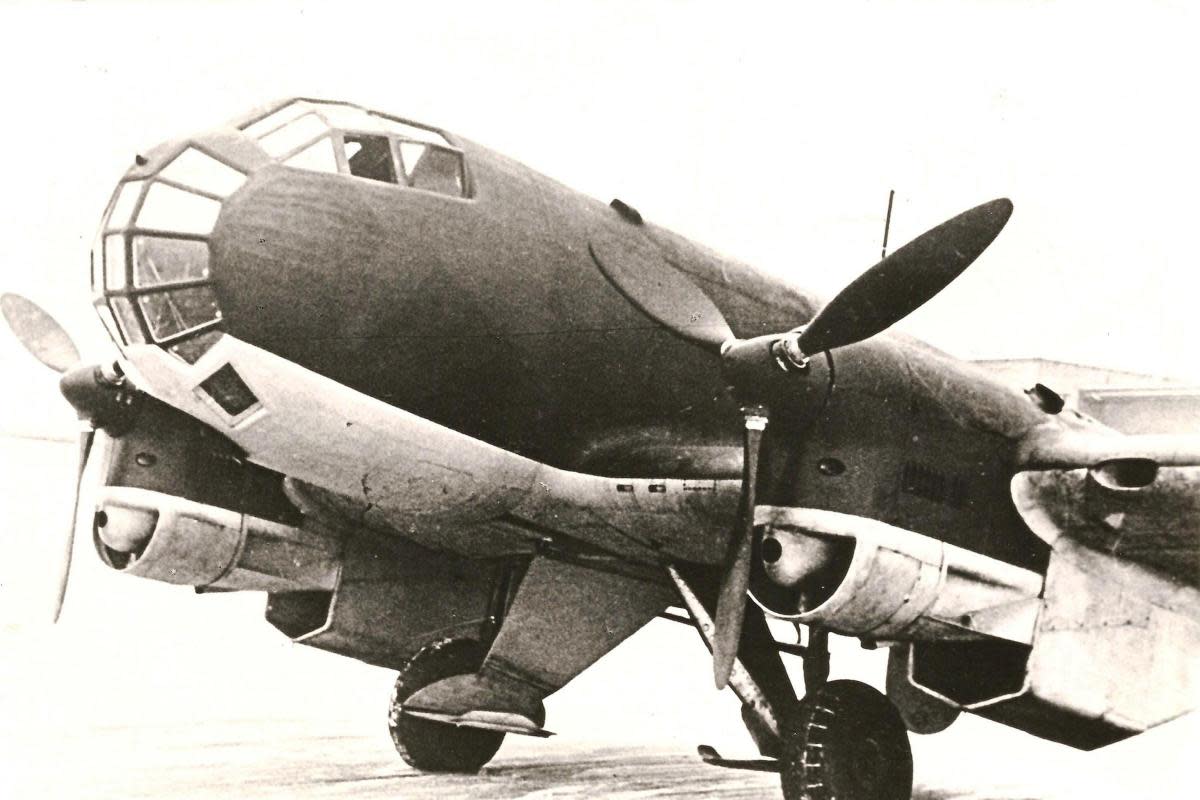Remembering the Nazis' deadly final WW2 air raid on Swindon

The last Nazi attack on Swindon during the Second World War has brought to life in vivid detail in a new book.
Steven Taylor has researched the oft-forgotten encounter as part of his hardback Combat in the Stratosphere.
Here is an exclusive snippet that Mr Taylor has shared with the Adver:
On the morning of Saturday August 29th 1942, a single bomb exploded in a residential area of our town.
What made this Luftwaffe air raid so unusual was the extreme altitude at which it had been carried out by a revolutionary new enemy bomber.
The 250 kg bomb had been dropped at the then phenomenal height of over 40,000 feet, from a Junkers Ju 86R aircraft fitted with a pressurized cabin, allowing it to reach a maximum altitude of 42,000 feet – higher than any other bomber in service during the Second World War.
Although capable of carrying only a single bomb, the Ju 86R’s ability to operate at extreme altitudes – beyond the reach of RAF fighters and anti-aircraft guns – made it effectively invulnerable.
The small number of Ju 86Rs were formed into an elite Luftwaffe unit in the summer of 1942, known as the Höhenkampf Kommando (High-Altitude Detachment), and from August 24th, flew sporadic raids against southern English towns from their base at Beauvais, near Paris.
On August 28th, the unit carried out its deadliest attack when a Ju 86R bombed Bristol city centre during the morning rush hour, killing 47 people and injuring dozens more. The following day, Swindon was targeted.
The town had suffered numerous small-scale Luftwaffe raids since 1940, the most serious being on the night of October 20th 1940, when a bomb hit Rosebery Street, killing ten, including a 12-year-old boy.
Early on the morning of August 29th 1942, a Ju 86R flown by the highly experienced Oberleutnant Horst Goetz, with Leutnant Erich Sommer serving as his navigator, took off from Beauvais. Reaching a height of 40,000 feet after crossing the English coast, the Ju 86R made its way north towards Swindon.
Its flight tracked by British radar, at 8am air raid sirens sounded throughout the city. Sixteen-year-old John Hamilton, a volunteer messenger with the Civic Defence Service, was cycling along Drove Road on his way to report for duty when the 250kg bomb dropped by Goetz and Sommer exploded at the junction with Cumberland Road.
Eight people were killed and a further six seriously wounded in the blast, which also left dozens of homes damaged, some of which later had to be demolished.
Hamilton, however, miraculously survived the explosion. "I was obviously meant to survive that day," he said many years later.
As the German bomber headed back towards France, two Spitfires of the Canadian No 401 Squadron were scrambled to intercept. But, despite the best efforts of the pilots, the Canadians were unable to reach the incredible height of the Nazi raider.
The squadron’s combat report stated that one of the Spitfires ‘followed and tried to get up sun.
When the Spitfire was at 39,000 ft the E/A [Enemy Aircraft] was still 700 ft above. The E/A reached 41,500 ft and the Spitfire had to break away owing to oxygen running short. The second Spitfire broke away at 30,000ft.
This would prove to be the final Nazi air raid on Swindon of the war.
The Germans’ high-altitude bombing campaign on England was brought to an end two weeks later, when the pilot of a specially modified Spitfire, stripped of all non-essential equipment to increase its maximum ceiling, managed to coax his fighter up to 42,000 feet and damage a Ju 86R flown by Goetz and Sommer near Southampton.

 Yahoo News
Yahoo News 
